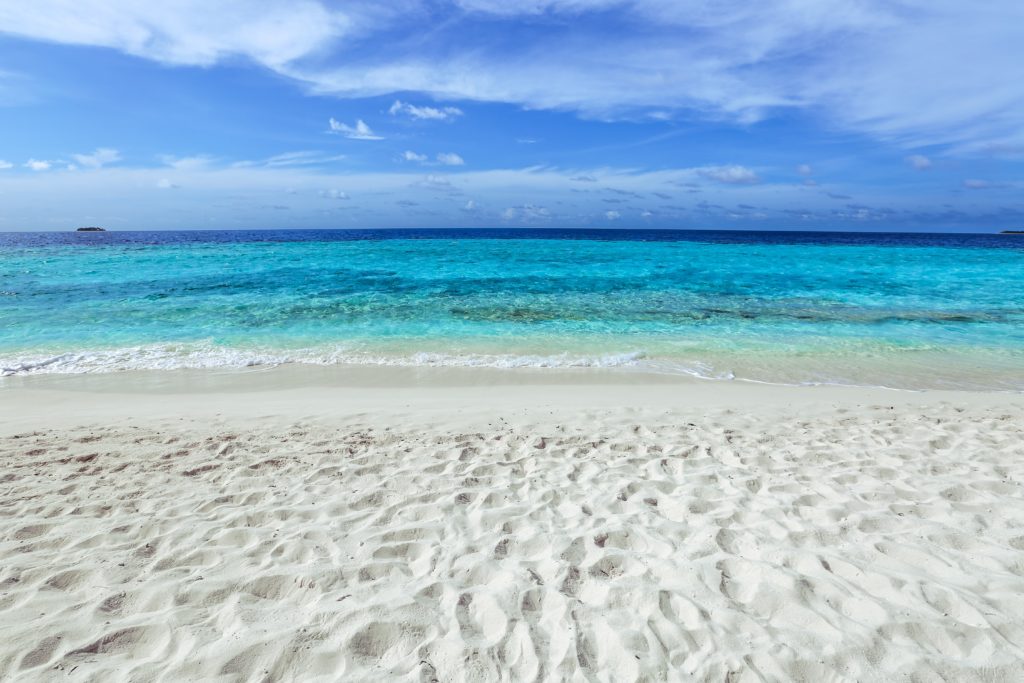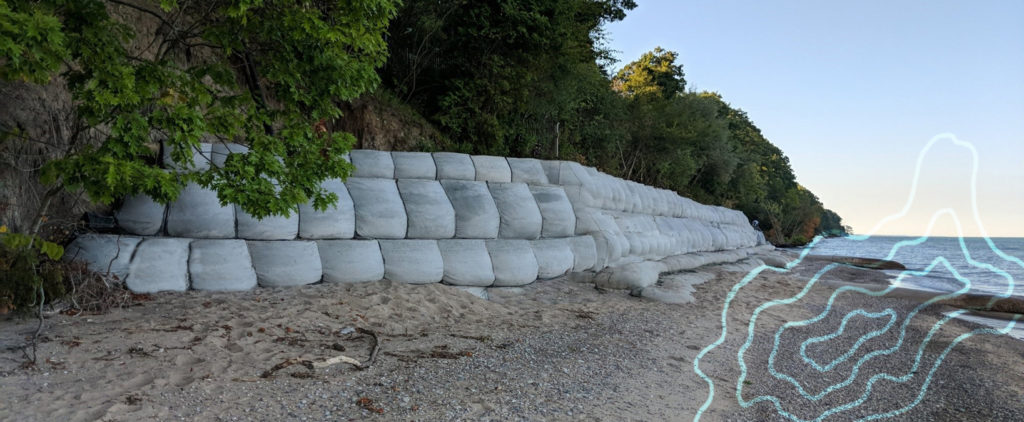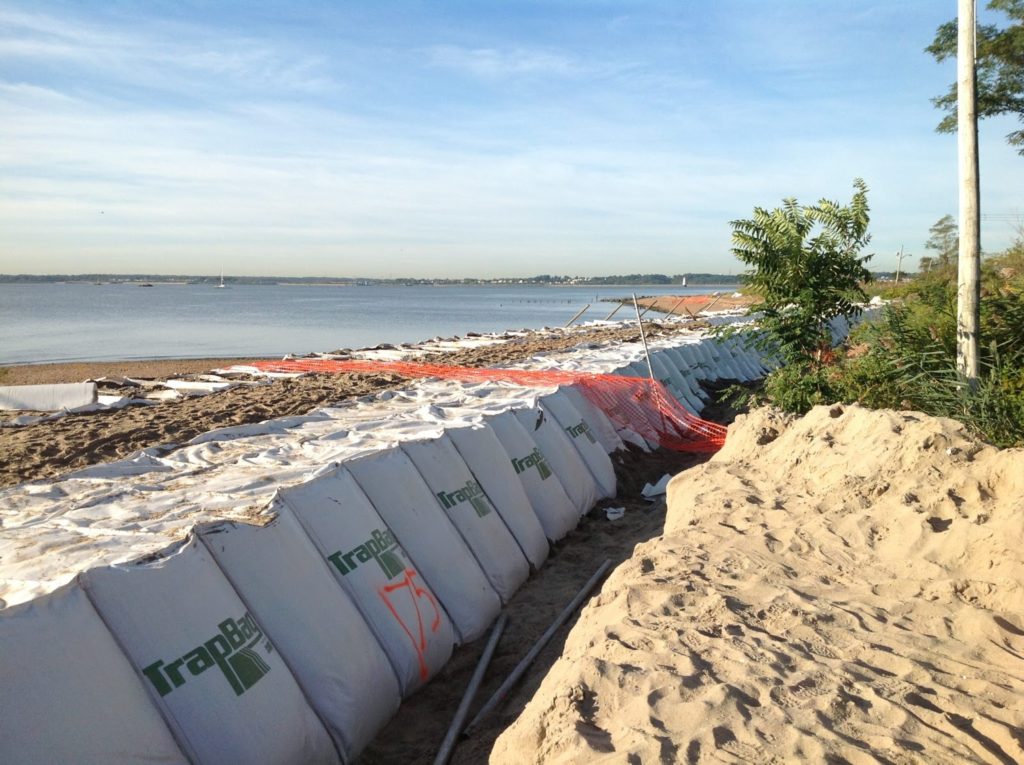Perhaps you own a home on the shore, or live in a community whose beaches suffer from erosion. It’s tough to see your beaches disappear and worry about whether your home or business will survive the next storm. There are ways to prevent erosion from happening while revitalizing and protecting your shore.
We help you learn about beach restoration methods and how retaining beach walls can help restore beaches and prevent erosion.
What is beach restoration?
Beach restoration is the process of rebuilding a sandy beach that is disappearing because of erosion. Rebuilding the beach is most commonly done by adding back lost sand, which you can do in a few different ways:
- Sand is brought from inland sites
- Sand is brought from healthy, nearby beaches
- Sand is brought by hydraulically pumping sand onto the shore from the water
Why is beach restoration important?
Beach restoration is essential to maintain and save a sandy beach from being lost to the water. The oceanfront, lakefront, or even river banks all benefit from restoration.
A sandy beach offers more than a nice place to spend the day, and the beachfront acts as a natural guard against the elements. It also helps break waves before they reach nearby properties and helps to prevent flooding. To save a recreational beach or even properties near the eroding beach, you’re going to need to restore the beach.
How beach restoration is done
There are a few beach restoration methods. The usual way is to replace the sand lost to erosion, as mentioned above. You can also build different kinds of shoreline retaining walls depending on budget and location.
Beach nourishment and replacing sand
Sand can be replaced on eroded beaches, also known as beach nourishment, by moving sand from somewhere else. You can get sand from further inland, from a nearby healthy beach, or pump it in from offshore. For public beaches, the taxpayers usually cover the expenses. If you own a private waterfront, the methods can become costly but are necessary to save your beach.
Retaining walls to prevent erosion
A beach retaining wall is your first line of protection against shore erosion. It reinforces the line between the water and the shore by building a physical wall. When water crashes against the coast, it breaks it down over time. When water hits a sturdy retaining wall, your land will stay intact.
Retaining walls, or seawalls, are made out of different materials, like steel or layered pieces of stone. The material you choose depends on your budget and the body of water you border. For example, steel retaining walls are better for freshwater locations since the Ocean’s salt can degrade steel.
Seawalls shore up your property against erosion, flooding, and last for a long time.
Beach Restoration pros and cons
Beach restoration can save your shoreline. It protects property that’s further inland from flooding. However, even with all these positives, there are some drawbacks to beach restoration.
Pros
- Maintain the coast, beaches, and recreational areas
- Protect inland property and communities
Cons
- Adversely affects wildlife and biodiversity: you bury marine life living in the old shoreline when you widen the area with sand
Soft vs. Hard beach restoration methods
There are two kinds of beach restoration methods: soft and hard.
Soft beach restoration methods:
- Beach nourishment, or adding sand
- Sandbags
Hard beach restoration methods:
- Retaining walls
How does beach nourishment work?
Beach nourishment, also called beach renourishment, is another name for sand replacement. It’s the process of widening a beach by bringing in new sand or sediment. It’s a “soft” method since it’s less intrusive than building an artificial structure like a retaining wall. A wider and higher beach achieved by adding additional sand can provide storm protection for coastal structures, create or rebuild animal habitats, and enlarge the beach for recreational use.
Using sandbags for beach restoration
Sandbags aren’t necessarily a long-term solution, but they are great for diverting floodwater. Piling sandbags doesn’t give a water-tight seal, so don’t depend on sandbags as your only means of flood prevention. If you’ve built up your beach and retaining wall, you may not need sandbags, or only need them during a big storm.
Beach & shoreline retaining walls
Retaining walls are noticeably manmade structures and are a hard restoration method. They are built on the shoreline between land and water.
How beach retaining walls work
Beach retaining walls are your first line of defense in beach erosion prevention. The benefits of using retaining walls as a beach restoration method are:
- They prevent erosion of a shoreline or beach
- They prevent flooding
- They are long-lasting and durable
How to use retaining walls to help with beach restoration
Retaining walls come in different materials and sizes. If you build the right retaining wall for your environment, then it’s a powerful tool against beach erosion.
The seawall is the barrier between the shore and the sea. You can build it below the surface (almost like a reef to interrupt the current) or above (to interrupt waves hitting land) with steel or stone. If it’s well constructed, it can protect the land for years. If you restore your beach with nourishment techniques and build a retaining wall, you will reinforcee your entire shoreline against the damage from the water.
TrapBag retaining walls for beach restoration
Building beach restoration walls with TrapBag can improve your shoreline and keep your property safe.
TrapBag is an affordable, rapid deployment, flood, and erosion control barrier system that protects property and life from natural disasters.
Why use TrapBags for beach restoration retaining walls
TrapBags were originally designed as an easily installed flood control barrier, mainly as a quick and easy way to defend against flash flooding. Besides acting as a superior alternative to sandbags, there are many other uses for TrapBag barrier bags, including Gravity Retaining Walls, cofferdams, and coastal erosion barriers.
TrapBag benefits include:
- Low-cost
- Rapid-deployment
- It uses 40% less fill material than a stacked sandbag wall
- A single 100-foot section of 4ft high TrapBag replaces approximately 8,000 sandbags
- TrapBags connect side by side like an accordion. Each cell has a common wall with the next cell and collapses during storage and deployment
- More water repellent than traditional sandbags, and their connection makes them usable as a retaining wall
- The high-strength textile can hold sand, washed gravel, or concrete
Before you go
Erosion prevention and restoration are the best defense against loss of property. Installing a beach retaining wall slows erosion down and reduces the need for frequent beach nourishment. Build a beach retaining wall today with TrapBag to protect your shoreline, preserve your beaches, and restore your shore. Contact us today to learn more.





